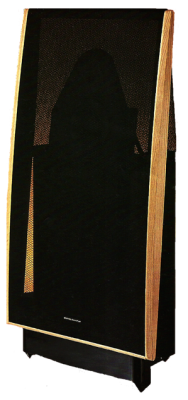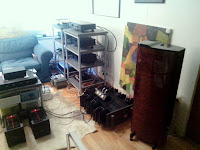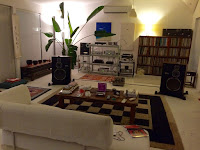2016 in Review
Letter from NYC (58) 2016 (14)
A belated Season's Greetings!
This Blog is now over 8 years old. Due to family matters, my output (in terms of articles written) hit an all-time low in 2012/13. Since then, there has been a small but steady increase. However, since I am buying fewer things and the stuff I do buy in HK tend to be small "gadgets", there is less to report on "serious" current products. However, I now focus more on older products and my own things that I have neglected previously, a valid trade-off. A little more than a year ago, I started the "HiFi Basics" series, but due to my somewhat compulsive nature have managed only 3 articles so far. I hope 2017 shall see more entries under that label.
Most Significant Events
- Kondo System Re-Make In a coming article I shall detail my efforts at matching loudspeakers to my Kondo Ongaku. Mind you, this is at my present small abode in HK. There were quite a few candidates and the results were, to say the least, quite surprising! After I started this effort I acquired an old Audio Note (Kondo design) M7 with built-in Phono. Its smaller size allowed me to use it in on an IKEA shelf (see pic above). It would be a shame not to use a turntable, so I just managed to squeeze in the smallest that I have, the humble Pro-Ject RPM 1.3. Then I added a subwoofer!!!! I assure you the end-result was quite satisfying, earning the approvals of my music lover friends Seng and wss! Coming soon...
- Vintage Cartridges Although this started 5 years ago when I re-tested my Empire 2000 cartridges (here), things didn't get serious until recently. Shure SC35C After initial failure, I finally got this "DJ" cartridge right (here)! Although my sample is current production, it is a replica of a vintage creation. I have yet to put this low compliance cartridge on a heavy arm, and it is already darn good. Warning: In some systems the treble could be just a little on the unrefined side. I rather think of it as a "monitor" type product, not the kindest to bad recordings. I just noticed its street price has gone up quite a bit to around $59. Still, quite a bargain! Shure M44-7 The ones currently sold are replicas of this vintage relic, beloved by DJ's. My sample just happened when I spotted a vintage body and NOS Empire replacement on Ebay, and so may not be representative. In any case, I just installed it yesterday as replacement for the SC35C on my cheap AT PL-120 and was absolutely floored - my cartridge of the year! Stanton 380 I heard this at my friend Andy's and took one back home to play. It has a very attractive rich hue and plays anything well. There shall be big article on these cartridges soon. Happy New Year already! Mono Cartridge Finally I got a mono MC, the Taiwanese Raos, and I am very satisfied. Unfortunately, Master Rao has passed away and these are not obtainable. Nagatron Ribbon Cartridge heard at Andy's was very impressive!
Vintage Loudspeakers Although in 2016 I have heard megabuck loudspeakers of the caliber of Magico Q7MkII, top-rated in any magazine, my kudos go to much older designs:
- Dahlquist DQ20 (reviewed here) was astonishing in how it made the music come alive, unequivocally leaving an expensive and well reviewed modern loudspeaker in the shade.
- JBL L20T Even this unassuming vintage JBL (reviewed here), which can be had for perhaps $200, is over-achieving. I was thinking of trying out Andrew Jones' new Elac B5/6 just for fun (I have a thing for inexpensive bookshelves), but after I got these JBL's I completely dispelled the idea (after all, I know his designs, as I have his recent Pioneer SP-BS21LR).
Buffer Amp Though a niche product, the iFi iTube is just wonderful. If you need some bloom, give it a serious thought!
Cable The Gotham DGS-1 continues to gain my admiration. Although not the best in hifi parameters, there is definitely something that is very attractive to this simple cable - a fluency that just makes music come alive with great presence and PRaT (the best analogy is non-oversampling in digital conversion). More and more of this cable are finding their way into my systems.
Brief Mentions My 47 Lab 4718 Shigaraki Phonoamp is finally running in and providing solid support for my mono Raos cartridge. My resurrected EAR 509 Mk II dealt a coup de grace to unreasonably priced Conrad-Johnson. I also acquired a Naim Nait I - no surprise as I previously owned and loved a II and still have the III. Sound is in the same mould.
Happy 2017!



































